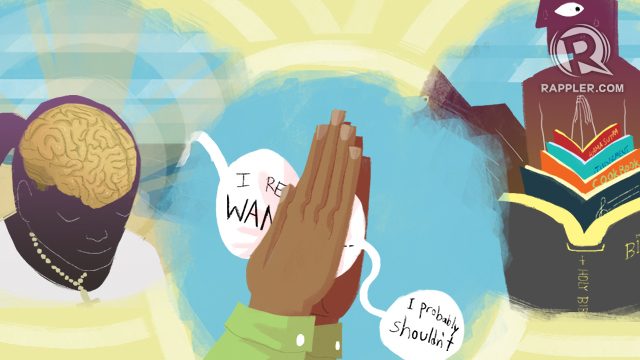SUMMARY
This is AI generated summarization, which may have errors. For context, always refer to the full article.

In the days when people thought about morality only against sacred text or authority, it was easier to label things as either “good” or “evil”. Well, “easy” mostly because sacred text had “authorized” people who supposedly knew what sacred text, no matter how nebulous it was, said about which was good and which was evil.
The coming holidays in fact, have always been considered as a time to connect more closely and deeply to that framing of morality, and to contemplate what really comes after our certain death. I have had my humongous share of that point of view when I was growing up. On hindsight, it was interesting and comforting in some aspects but then, the view from science based on studies was not an option when it came to any belief.
Fast forward to now and you, the reader, and I, the writer of this science column meet in this space. If you would be reading further from here, we can explore the ways as to how science, the now “interloper” in this once “off limits” territory, has been investigating subjects like “morality” and “belief”. Here are some of those interloping scientific adventures in this once “off limits” territory.
1. The high you get in “retreats.” Religious retreats make you feel positive because studies have found that people who have gone through a 7-day retreat change the way their brain chemicals namely serotonin (responsible for mood regulation) and dopamine (responsible for that rewarding feeling) behave. These chemicals apparently bind less in your head when in a retreat so that more of it is available to affect you. It is not saying that it was not God giving you that good feeling. Science is just saying, it was not God they saw in the brain scans.
2. Believers’ brains. This study investigated the brains of devout believers, scanning them while they were made to think about their deeply held beliefs. The scans showed that brain parts associated with other deep passions like love, food, music and even sex, were activated. More importantly, brain parts associated with judgement also showed raised activity, indicating that belief and decisions that we make are closely linked. So if beliefs are personal, what do we do with personal beliefs as basis of public policy?
3. Epilepsy and religious experiences. Even back in the 19th century, scientists have found clues that led them to think that epileptic conditions and religious experiences are linked in our brains. This investigation is one of those in science now that are trying to see how they are linked. Some of you might balk at the thought of religion being thought of as an “abnormal” condition like epilepsy. But the fact is, religion is an extraordinary feat your brain makes because it does this, regardless of evidence that could make you think in other ways.
4. The effect of prayer. When we are sick, especially when we are very sick, people comfort us by saying they will pray for us. I am neutral about this I just consider this as a form of generosity by people who care. But this famous study revealed that as far as prayers for patients recovering from heart surgery go, prayers did not seem to affect their recovery. Some who were told they were being prayed for, even developed more complications. But one study found what prayers can do, even if you do not believe. And this is prayers can regain for you a hold on your own life – more self-control.
5. Half a believer, literally. In this talk by eminent neuroscientist, VS Ramachandran, he shares many cases, among them of a patient who had to have his right and left brain separated from each other (surgeons do this to prevent serious epileptic seizures). This is done by cutting the bridge that connects the two called the corpus callosum. To VS Ramachandran’s astonishment, when he asked his patient to answer (by using one arm at a time since the right hemisphere controls the left arm and the left hemisphere controls the right arm), “do you believe in God?”, the patient only half believes. One arm pointed to a box that said “yes” to the question and then the other arm pointed to “no”.
Science does not tell you whether to believe or not in something or someone. It can only tell you what it has found after it found a way to test certain claims. Unlike religion, it does not sanction you or threaten you if you do not believe. It also does not ask you to worship studies as further studies could reveal different things. Science just tells you that questioning has no limits as the mind has none. – Rappler.com
Add a comment
How does this make you feel?
There are no comments yet. Add your comment to start the conversation.